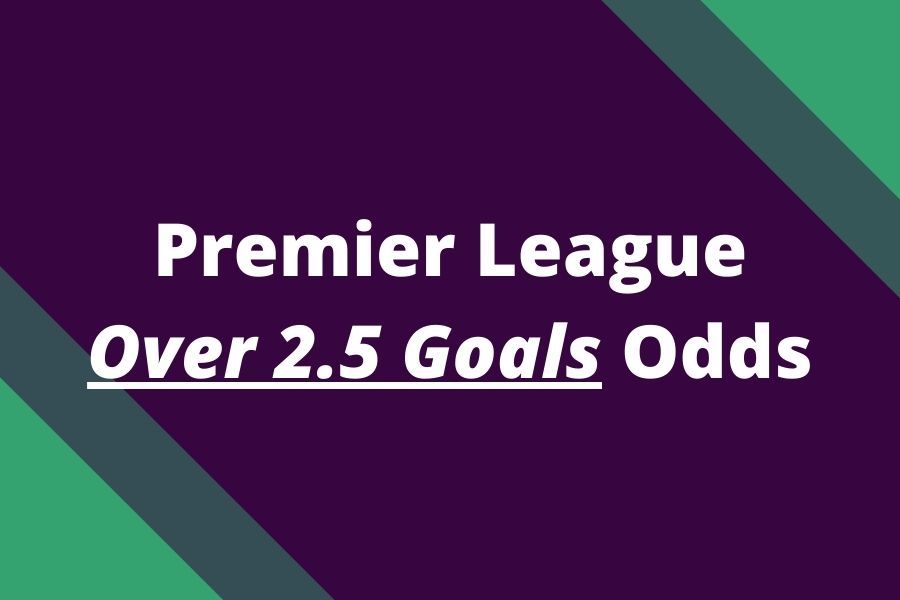
When did FPL start? The first-ever Fantasy Premier League competition dates back to the 2002/03 season. But what led to this magical day?
Fantasy Premier League (FPL) is one of the most popular games on the planet when it comes to fantasy football. Each season millions of football enthusiasts worldwide test their managerial skills, strategizing and selecting their dream teams from the pool of players in the English Premier League.
In 2023 it has over 11 million players, which is an absolutely crazy number. The popularity and significance of FPL are undeniable, with its influence extending beyond mere entertainment to shaping discussions and narratives in the football community.
Read more: When will FPL 2023/24 start?
And it is not the only fantasy sports game in the world. There are many others such as World Cup fantasy, EURO fantasy, NBA fantasy, NFL, MLB, and so on.
But how and when did it all start?
This article will take a look at the history and origins of fantasy football; especially Fantasy Premier League.
Let’s look at it step by step.
It all started in United States and the first fantasy football competition concerned American football – NFL and not European football – soccer.
The Genesis of fantasy football in USA
1962 – birth of Fantasy Football
We can track the first-ever fantasy football competition back to 1962 when Bill Winkenbach, then part-owner of football team Oakland Riders, created the first fantasy league with his friends, which they call GOPPPL (Greater Oakland Professional Pigskin Prognosticators League). Bill Winkenbach is considered to be an inventor of fantasy football.
The concept of the game was similar to the one we know. The league members were able to draft actual players from NFL (and American Football League) into their squads and were awarded points based on players’ real performance.

Source: nfl.com
GOPPPL was a private league of just eight members: administrative affiliates of the American football league, pro journalists, and some ticket holders of Oakland Riders.
1969 – from private to public
In 1969, a member of GOPPPL – Andy Mousalimas brought the game to his Oakland sports bar and formed the first public fantasy football league. After that, the idea of this game slowly spread across the United States.
Notable dates
- 1976 – The Fantasy Football League Commissioner’s Official Playbook is published, providing an instructional manual for aspiring fantasy football players.
- 1978 – The DePaulia National Football League is founded by a group of eight students at DePaul University in Chicago, marking the birth of one of the oldest fantasy football leagues still in operation today.
- 1980 – The Indoor Football League is founded in Cleveland, Ohio by a group of six students at Case Western Reserve University after reading an article in Inside Sports magazine that describes the basic concept of fantasy football.
- 1983 – A group of high school students at Marist School in Atlanta, Georgia, form one of the earliest fantasy football leagues on the East Coast.
- 1985 – Grandstand Sports Services introduced the nationwide online fantasy football leagues via Q-Link, which was subsequently rebranded as America Online.
- 1987 – Fantasy Football Index, the first national magazine dedicated solely to fantasy football, is launched by Ian Allan and Bruce Taylor.
- 1990 – The first national newspaper fantasy football competition, Pigskin Playoff, is created by Robert Barbiere, Lee Marc, and Brad Wendkos.
Fantasy Football found its way to Europe
The concept of fantasy football, which laid the foundation for FPL, arrived in Europe in 1990 and it is connected to the Italian journalist named Riccardo Albini. Albini’s idea was to create a game where participants could assemble their dream teams and earn points based on the real-life performances of the players they selected.
Just a year later, in 1991, this novel idea crossed the borders of Italy and found its way to England. Andrew Wainstein, intrigued by the concept and its growing popularity in the United States, decided to introduce it to the English audience. Wainstein’s version of the game was met with enthusiasm, marking the beginning of a new era in the relationship between football fans and the sport.
While the US version of fantasy football was primarily focused on American football, Wainstein’s adaptation centered around what the English call football, known as soccer in the United States. This shift in focus was a significant factor in the game’s acceptance and popularity in England, a country where football is deeply ingrained in the culture.
When did FPL start?: The first FPL season 2002/03
Fast forward to the 2002-2003 season, the first official game of what we now know as the Fantasy Premier League was launched. This was during the “Invincibles” era, and at this time, the tracking of most teams had to be done manually. Despite the challenges, the game was met with great enthusiasm from football fans, eager to take on the role of virtual managers.
The initial participation in FPL was modest, but the seeds had been sown. The game offered fans a unique opportunity to engage with football on a deeper level, allowing them to make strategic decisions and experience the highs and lows of managing a team. This immersive experience was a game-changer, setting the stage for the exponential growth of FPL in the years to come.
FPL layout in its first season 2002/03

Rules from the first season:
The FPL team restraint:
- 2 x Goalkeeper
- 5 x Defenders
- 5 x Midfielders
- 3 x Forwards
Available budget: 100 million
First season allowed formation:
- 2-5-3
- 3-5-2
- 3-4-3
- 4-5-1
- 4-4-2
- 4-3-3
- 5-5-0
- 5-4-1
- 5-3-2
- 5-2-3
Note.: As you can see, there were two “untypical” formations during FPL’s first season: 2-5-3 and 5-5-0
There were also “preseason” games included in the game, but the points scored in the preseason did not count towards total points output and real action started on GW1 as usual.
The scoring system in FPL’s first season:
| ACTION | POINTS |
|---|---|
| For playing in a game | 1 |
| For playing at least 60 minutes in a game | 2 |
| For each goal scored by your goalkeeper or defenders | 6 |
| For each goal scored by your midfielders | 5 |
| For each goal scored by your forwards | 4 |
| For each goal assist | 3 |
| For your goalkeeper/defender conceding 0 goals and playing at least 60 minutes | 4 |
| For your midfielders conceding 0 goals and playing at least 60 minutes | 2 |
| For every 3 saves made by your goalkeeper | 1 |
| Bonus points for being judged to have made an excellent performance in a game | 3 |
| For every 2 goals conceded by your goalkeeper or defender | -1 |
| For every yellow card awarded against one of your players | -1 |
| For every red card awarded against one of your players (includes any yellow card points) | -3 |
source: Way Back Machine
Transfers: 1 free transfer per gameweek, -4 points for additional transfers.
The Evolution of Fantasy Premier League
As the years rolled by, Fantasy Premier League began to evolve, adapting to the changing landscape of football and the growing demands of its participants. The game that started as a simple concept of virtual team management gradually incorporated more complex elements, enhancing the strategic aspect and making it more engaging for the players.
Layouts of FPL during its evolution
The rules and details of FPL underwent several modifications over the years. The scoring system was refined, player prices were adjusted, and new features like wildcards, bench boost, and triple captain were introduced. These changes added layers of complexity and strategy to the game, making it more challenging and exciting for the participants.
The rise of the internet and digital technology played a crucial role in the evolution of FPL. The manual tracking of teams and players was replaced by automated systems, making the game more accessible and user-friendly. The introduction of mobile apps brought FPL to the fingertips of the players, allowing them to manage their teams on the go.
The Global Rise of Fantasy Football
Parallel to the evolution of FPL was the global rise of fantasy football. What started as a niche hobby for a small group of football enthusiasts began to gain mainstream attention. The success of FPL in England sparked the launch of similar games in other countries, leading to the worldwide popularity of fantasy football.
The man who started it all, Andrew Wainstein, was pleasantly surprised by the global acceptance and growth of his creation. From a few hundred players in the early days, the game expanded to millions of players across the globe. The rise of fantasy football was not just a testament to the popularity of the sport but also a reflection of the growing interest in strategic and interactive games.
Impact and Influence of Fantasy Premier League
The Fantasy Premier League has not just been a game; it has been a revolution in the football community. It has transformed the way fans engage with football, providing them with a platform to showcase their understanding and knowledge of the sport. The discussions around FPL have become a significant part of football conversations, influencing opinions and narratives.
FPL has also played a role in promoting the Premier League to a global audience. Fans from different parts of the world, while managing their FPL teams, have developed a deeper connection with the Premier League, its teams, and players. This has contributed to the global popularity and reach of the Premier League.
Moreover, FPL has created a community of its own, a community of millions of football fans who share a common passion for the game. This community, connected through various online platforms, engages in discussions, debates, and friendly competitions, adding a social dimension to the game.
Current Status of Fantasy Premier League
Today, the Fantasy Premier League stands as the largest fantasy football game, operated and owned by the Premier League itself. It is free to play and boasts over 10 million players worldwide, a testament to its immense popularity.
The current season of FPL, like the previous ones, has been a rollercoaster ride for the players. With each gameweek, the players strategize, make transfers, select their captains, and hope for the best. The unpredictability of football, the thrill of competition, and the joy of seeing your team perform well – all these elements make FPL an exciting and engaging experience.
Conclusion
Looking back at the journey of Fantasy Premier League, it’s incredible to see how a simple idea has grown into a global phenomenon. From its origins in the mind of an Italian journalist to its introduction in England and its evolution over the years, FPL has come a long way.
The future of FPL looks promising. With the growing popularity of football and the increasing interest in interactive games, FPL is likely to attract more players and reach new heights. As we continue to enjoy the thrill and excitement of managing our virtual teams, let’s also appreciate the journey of FPL and look forward to its exciting future.


















![3 Best Captain Picks for FPL GW38 [Captaincy Index] fpl best captain picks](https://www.fantasyfootballreports.com/wp-content/uploads/fpl-best-captain-picks.jpg)

